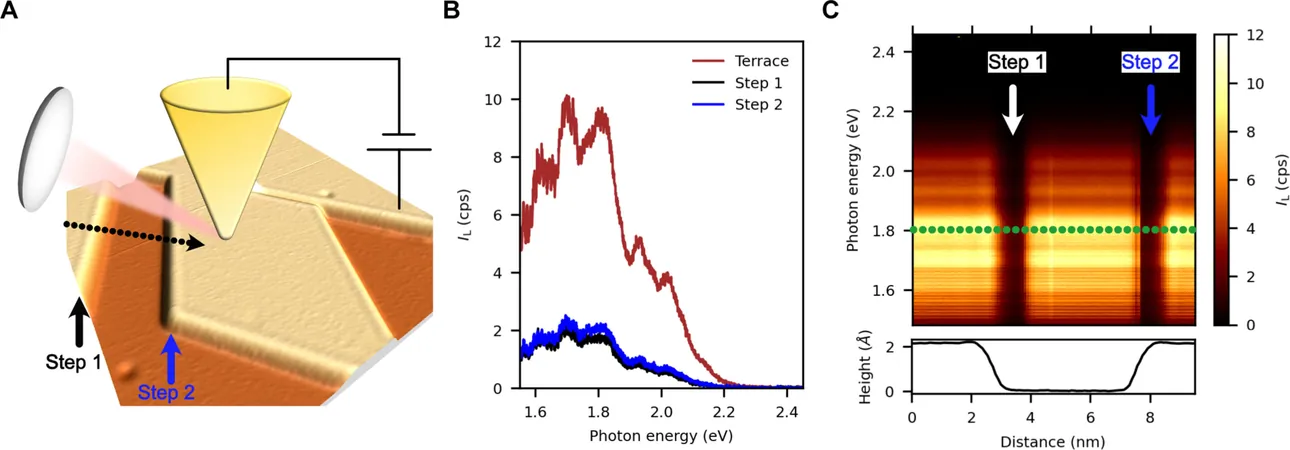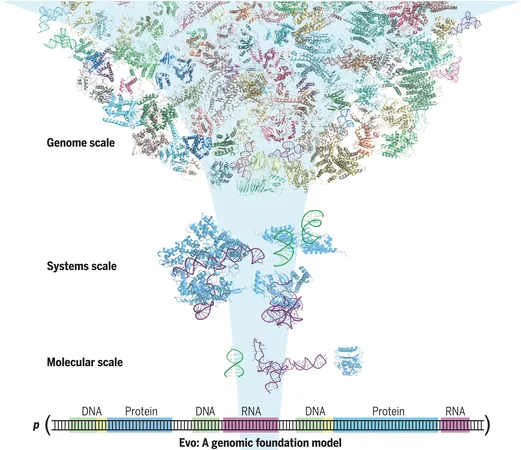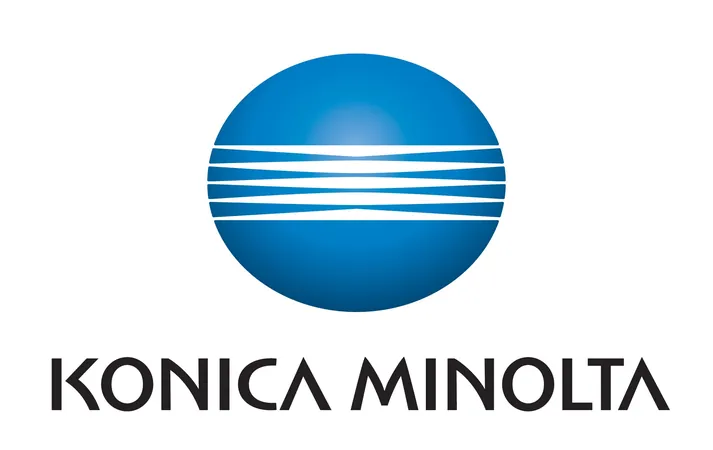
How a Single Atom Can Revolutionize Light Direction in Advanced Microscopy!
2024-11-05
Author: Michael
Groundbreaking Revelation in Light Manipulation
In a groundbreaking revelation, researchers from Madrid have uncovered a remarkable phenomenon that allows for the manipulation of light emission at the atomic level, unlocking new possibilities in the field of scanning tunneling microscopy (STM). Their findings, recently published in the prestigious journal Science Advances, reveal how the presence of just one atom can dramatically alter the directional profile of light emitted during experiments.
Nanocavity Concept
At the core of this discovery lies the concept of a nanocavity, created by the intimate proximity between a gold STM tip and a smooth silver surface, typically separated by a mere 1 nanometer. This unique setup confines the electromagnetic field, allowing scientists to manipulate light in unprecedented ways. When atomic defects or steps are introduced into this nanocavity, researchers have observed that the system transforms into a so-called picocavity, which exhibits extraordinary properties.
Experimental Insights
During meticulously designed experiments, led by Alberto Martín Jiménez and Roberto Otero at IMDEA Nanociencia, the team employed a picoantenna setup to collect data on light emissions. They found that as the STM tip traveled across the sample surface, the light produced by electrons tunneling through atomic steps varied significantly depending on the step's orientation in relation to the light collection direction. This challenges the traditional notion that light emission is uniformly distributed in all spatial directions, revealing instead a distinct cardioid-type directional profile.
Linking Light Intensity to Orientation
Moreover, their investigations showed that the intensity of light emitted per electron is intricately linked to this relative orientation, signifying that even the smallest atomic defect can lead to a significant shift in the electric field distribution. This insight is poised to pave the way for innovative control of light directionality on the nanoscale, with potential applications ranging from advancing quantum computing technologies to enhancing the sensitivity of nanoscale sensors.
Broader Implications of the Research
The implications of this research extend far beyond microscopy. The ability to finely tune the direction of light emitted from various atomic sources, such as molecules and quantum dots, could revolutionize how we understand and utilize light in a range of applications, including photonics and nanophotonics.
Conclusion: The Future of Quantum Technologies
In essence, these findings not only offered a scientific explanation for previously observed phenomena but positioned single atoms as powerful players in the quest for greater control over electromagnetic fields at the nanoscale. The future of quantum technologies may hinge on such atomic-level phenomena, making this an exciting time for researchers and technologists alike. Stay tuned as science continues to unveil the extraordinary capabilities hidden within the seemingly mundane world of atoms!









 Brasil (PT)
Brasil (PT)
 Canada (EN)
Canada (EN)
 Chile (ES)
Chile (ES)
 España (ES)
España (ES)
 France (FR)
France (FR)
 Hong Kong (EN)
Hong Kong (EN)
 Italia (IT)
Italia (IT)
 日本 (JA)
日本 (JA)
 Magyarország (HU)
Magyarország (HU)
 Norge (NO)
Norge (NO)
 Polska (PL)
Polska (PL)
 Schweiz (DE)
Schweiz (DE)
 Singapore (EN)
Singapore (EN)
 Sverige (SV)
Sverige (SV)
 Suomi (FI)
Suomi (FI)
 Türkiye (TR)
Türkiye (TR)